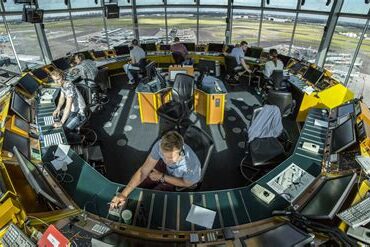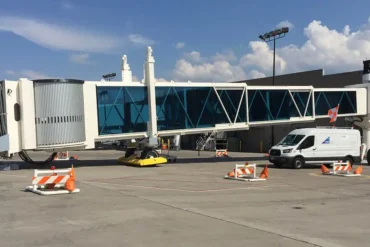You know that feeling when you’re up in the clouds, and it seems like there’s no limit to where you can go? Well, it turns out that even the sky has its rules!
Nowadays, hopping on an international flight is as easy as ordering a pizza. But did you know there’s a whole bunch of agreements that make sure planes can zip through different countries’ airspace? It all started back in 1944 with something called the Chicago Convention. Sounds fancy, right? Basically, it says that every country owns the air above it. So, if an airline wants to fly from one country to another, they’ve got to get permission first. To make this whole process smoother, some clever folks came up with the “nine freedoms of the air.” Let’s break them down:
1st Freedom
This is like getting a hall pass to fly over a country without touching down. Imagine you’re flying from New York to London and passing over Canada – that’s the first freedom in action!
2nd Freedom
Think of this as a pit stop. It lets planes land in another country for things like refueling or repairs, but not to pick up passengers. For example, a flight from Tokyo to Los Angeles might stop in Anchorage to refuel.
3rd Freedom
This is your basic A to B flight. It lets an airline fly people or stuff from its home country to another. Like Air France flying passengers from Paris to New York.
4th Freedom
This is just the reverse of the 3rd freedom. It’s when an airline brings people or cargo back home. So, Air France flying from New York back to Paris.
5th Freedom
This one’s a bit trickier. It’s like a layover with benefits. An airline can pick up passengers in one foreign country and drop them off in another, as long as the flight started or ends in the airline’s home country. For instance, Singapore Airlines flying from Singapore to New York with a stop in Frankfurt, where it can pick up new passengers.
6th Freedom
Think of this as a connecting flight through the airline’s home country. For example, Emirates flying passengers from London to Sydney via Dubai.
7th Freedom
This is like being a globetrotter. An airline can fly between two foreign countries without even touching its home base. Imagine if Lufthansa (a German airline) flew directly between London and New York.
8th Freedom
Also known as “cabotage,” this lets an airline carry passengers within another country, but only if the flight started or will end in the airline’s home country. For example, British Airways flying from London to New York, then continuing on to Los Angeles with new passengers.
9th Freedom
This is the ultimate freedom! It allows an airline to operate entirely within a foreign country. Imagine if Air Canada started running flights just between U.S. cities, without ever touching down in Canada.
And there you have it – the nine freedoms of the air that keep our skies buzzing with activity! Pretty cool how something so complex can make our travels so simple, right?


















